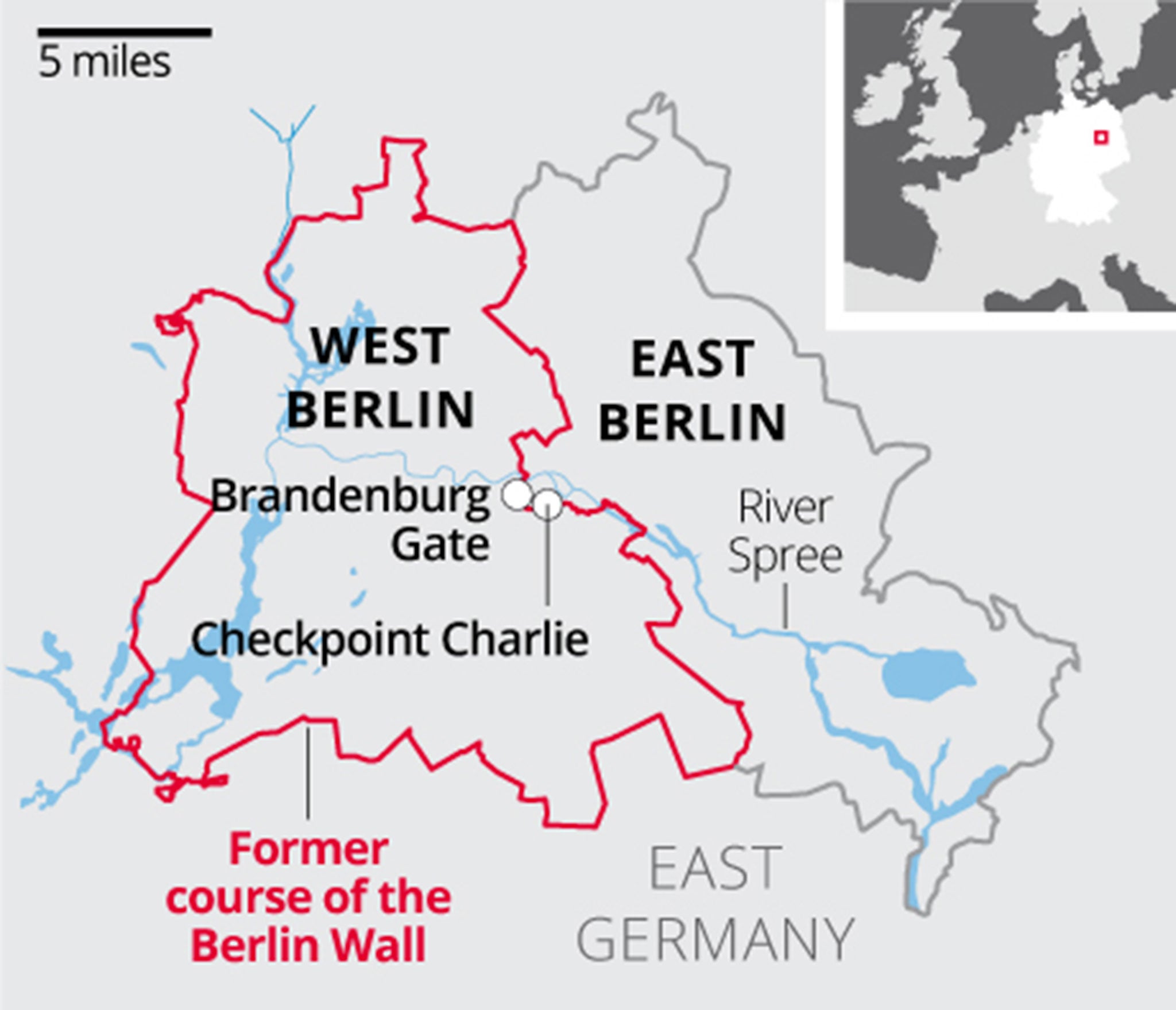 |
| The route of the wall which encircled West Berlin 1961-1989. |
It was only a 10-15 minute walk from our hotel to Bernauer Strasse where a commemorative and interpretive centre was built to "explain" one of the remaining sections of wall. Seeing the wide "death strip", the preserved sections of fence, and the photos of the dead was strangely unsettling. We were not at some impassive memorial to an unfortunately momentous event in the remote past, but we were sharing in a tragedy which still is felt deeply.
 |
| We enter the "no man's land" and the "death strip" along the line of the Berlin Wall. |
It is convenient but incorrect to talk of "The Berlin Wall". As the film "Bridge of Spies" depicted. the first "wall" was a hastily erected wire fence across which many people were able to flee. As escape attempts became more elaborate the Berlin Wall evolved into the 4th generation "Border Wall 75" (1975-1989).
The Berlin Wall was more than 140 km long and was not a simple wall as was sometimes depicted. It was really a series of "deterrents" (officially it was partly to stop those desperate West Berliners breaking into the people's paradise in the east). Houses were demolished to create an open zone which was more readily patrolled; there were trenches, large concrete blocks and barriers to stop attempts to drive cars or trucks through the wall; mesh fences, barbed wire, beds of nails and trip wires made it almost impossible to approach "the Wall" itself which was made of reinforced concrete and stood 3.6m high and 1.2m wide, capped with a smooth pipe to make scaling difficult. And don't forget the guard dogs on long leads, the search lights, the guards in the 116 watchtowers (with orders to "shoot to kill") and the 20 bunkers for reinforcements. It was a formidable barrier.
 |
| Ground marker delineating the extent of the exclusion zone on the east German side. |
 |
| Model showing the course and nature of the barrier obstacles at the location we visited. |
 |
| The explanation sign for the secondary section of wall depicted in the photo above. |
 |
| Memorial to those who died trying to escape across this section of the Berlin Wall. Most attempts were in the early years before the many additional measures made attempts futile. |
 |
| Photographs of those who died here during escape attempts. |
 |
| Close to the Interpretative & Memorial centre was this section of wall which cut through the middle of the church cemetery. In other places train lines were blocked. |
 |
| Here you can get some idea of the width of the "death strip" |
 |
| A guard tower has been left in place here. |
 |
| On many buildings along the route of the wall are photographic reminders of past events. |
Only a few sections of the 4th generation Berlin Wall remain standing, but the line along which it ran is commemorated by a stone strip. At a few places there is some sort of more visible reminder, such as the "Checkpoint Charlie" guard box recreated so that tourists can take a "selfie" with actor-guards.
 |
| Warning sign at the site of the former border crossing. These were labelled "A", "B" and "C" etc. "C" crossing became famous as "Checkpoint Charlie" (military name used for letter "C") |
 |
| The recreated "Checkpoint Charlie" - the place for a "photo opportunity". |
 |
| A "lest we forget" style sign depicting one of the many crisis times in the confrontation between East and West. |
Apart from the wall remnants there are many other reminders of the former division between East and West Berlin. In the 25 years since "Reunification" in 1990 the differences between former "east" and "west" areas can still be seen.
Berliners have been brave and honest in confronting their past as a way of healing wounds and moving forward. Much of what we saw was confronting and sobering, but this aspect of Berlin's past is too important to ignore. I'm glad we were there.
Paul & Judy
January 2016

No comments:
Post a Comment